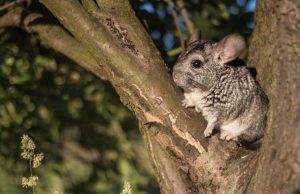What is a chinchilla?
A chinchilla is a furred rodent, with mouse-like ears and a long fluffy tail which makes up around one-third of their body length. Though they look like slightly oversized, fluffy squirrels they have two razor-sharp teeth.
A chinchilla’s length will range from around 22 – 49 cm; if you take a standard 30cm ruler, you can imagine an average chinchilla size. In addition, they have long hind limbs perfect for leaping. They can jump over six feet in height. Warning; your pets could jump onto the top of refrigerators.
Chinchilla’s adapted hairless footpads from their need to grip onto rocky surfaces, now meaning they can move quickly and easily. Furthermore, because they lived in high altitude, their red blood cells can take more oxygen than the average rodent.
Chinchillas can lose large patches of fur (known as ‘Fur Slip’). Fur slip is a defence mechanism against predators, which results in the predator being left with a tuft of fur while the chinchilla escapes. However, fur slip can also occur in captivity due to inappropriate handling.
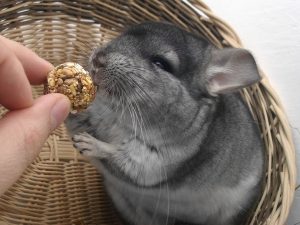
On youtube you can find many videos for an insight into chinchilla’s every day lift setting. For example funny pets posts a collection of chinchillas doing every day activties.
The history of Chinchillas.
Chinchilla history is vague up to the time when the Spaniards travelled to South America in 1524. In South America, the Spaniards encountered a tribe of Indians called “Chinchas” who introduced them to the little furry animals
Chinchillas are rodents native to the Andes Mountains of northern Chile (The Andes Mountains line the western edge of South America, from Venezuela, and Chile to South America’s southern tip, crossing through Ecuador, Peru, and Bolivia). They first appeared around 41 million years ago, with their ancestors being the first rodents to infest South America.
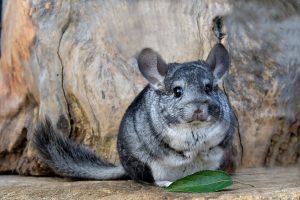
The chinchilla got its name after Chincha people of the Andes, who once wore its dense, velvet-like fur. The international trade in chinchilla fur went back to the 1500s and became popular in the 1700s. By the end of the 19th century; chinchillas had already become quite rare and hunted nearly out of extinction. Chinchillas are currently captive bred for both the pet industry and the fur trade.
Chinchilla’s were thought to have been brought over to North America (In February 1923). When Chapman, an American mining engineer, took an immediate liking to them and hoped that he could take a few of them home to California as pets.
The export of chinchillas was illegal. However, the miner eventually persuaded the authorities. He brought eight male and three female Chinchilla Lanigeras. Although this is almost certainly apocryphal, it is thought that all chinchilla’s in North America come from Chapman.
Buying a chinchilla
Adoption
Blue cross, pets4home and many other charities offer you to adopt chinchillas that need a new home.
Blue Cross says: “We help find the perfect pet for you by matching the pet to suit you and your family’s lifestyle, ensuring that whatever animal you adopt it is the right one for you.”
Private seller
On the other hand, websites such as gumtree allow people to post private listings of their chinchillas. However, make sure you look carefully as sometimes the owners’ are not looking out for what is best for the chinchilla.
Big shops
If you are looking for something with more guarantee. Pets at home sell chinchillas. They can also provide you with more information. You can also pick up everything you need for your chinchilla (cage, bedding, food) when you are there.
Illegal
Chinchillas have not had an easy life. They have been used and abused for their silky, soft fur. For years there have been cases of illegal fur farming. When buying your chinchilla, we recommend you go for adoption or do heavy research ensuring the chinchilla is happy.
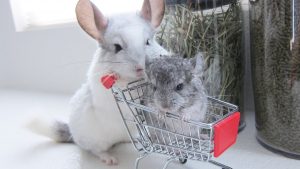
Is a chinchilla a good pet?
The chinchilla is a common pet nowadays, and you can buy them in large pet stores or online.
Chinchillas can make excellent pets for the right person. The animals are naturally very skittish creatures and generally do not like to be held, although they can become very attached to their owners. Because they are fragile creatures, it is best not to get a chinchilla if you have small children.
However, that is not to say all chinchillas are like this. Every chinchilla has its individual personality, and you never know what type of character you will get.
Furthermore, if you are willing to get one chinchilla as a pet, are you ready to get two? Chinchillas work best with a companion, as they naturally are heard animals. We recommend you adopt the same-sex chinchillas because with male and female you will get babies. However, if you decide to get different sexes, make sure to mutualise the male first).
On the other hand when you book one of our workshops, you can handle our chinchillas.
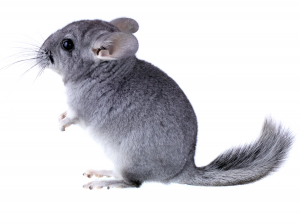
Housing your Chinchilla.
Sizing
Chinchilla’s are energetic balls of fur, hence why they need ample space. Ideally, any size from 30″ tall, 24″ wide and 15″ deep is best. Chinchilla’sChinchilla’s need the excitement and the duplicate of their originating environment. Buying a “condo cage” a house with multiple floors allows the ChinchillaChinchilla to explore and get their energy out. Furthermore, wired condos are best for your ChinchillaChinchilla as they cannot gnaw through it (unlike wood).
Temperature /Humidity
Chinchillas need in-door, well ventilated, dry housing. Ideally around 10-18ºC. If the ChinchillaChinchilla is in a hot or wet condition, it may cause them to suffer from illness. Since they originate from cool, dry mountains in South America, they have adapted dense fur keeping them warm. When you replicate the dry climate, they can put their coat to use!
Location
Have the Chinchilla’s habitat in a well-lit area and close by to you, to keep an eye on how they are doing. However, if you are a loud and active household, it may be best to move the Chinchilla somewhere quieter for them not to become stressed out and then catch a disease.
Sleeping area
Provide a “hide box” for your chinchilla to rest in. We recommend you take a non-toxic wooden house. You can find them on websites such as pets at home.
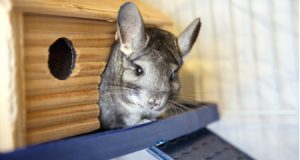
Diet of a chinchilla
Just like humans, chinchillas need fresh water every day. Make sure, throughout the day; you check your Chinchilla’s water bottle is clean and full. Chinchillas’ digestive systems need hay and grass to function correctly. They naturally eat grasses, leaves and twigs. A hay rack is the right way of making sure the Chinchilla always has an offer of hay.

Disease
When you have two chinchillas together, you may be unfortunate to find out they do not get along. Chinchillas that do not get along may result in biting and are then susceptible to bite wounds. If your chinchilla looks in distress, please take them to see a vet as soon as possible.
Chinchillas often have a relatively minor respiratory problem. However, if left untreated, it can rapidly progress to pneumonia, which could be fatal to your chinchilla. Conditions such as overcrowding, poor ventilation, and high humidity may predispose to pneumonia.
Make sure you take your chinchilla to the vet, for them to have regular check-ups. Chinchillas can often have overgrown and impacted teeth as well as skin problems.
Finally, when cleaning out your chinchilla’s cage every week, take a look at the colour of their urine and colour/consistency of their faeces. The best way for you to make sure your chinchilla is healthy is through looking at the texture when they go to the toilet!
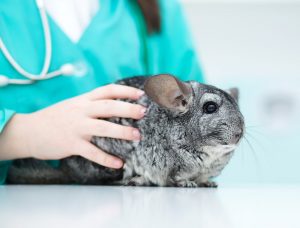
Grooming
Chinchillas do not enjoy brushing from humans; neither do they need it. The only occasion where this may be necessary is when using a long-tooth comb to remove mats from their fur. Brush only if necessary, and the aim should is to cause as little stress to the animal as possible.
Chinchillas clean themselves by nibbling at their fur for a few seconds, almost looking as if it’s burying its head in its hair. Chinchillas usually do this and does not necessarily mean underlying issues like parasites or ringworms. It will do so in any place it can reach: its belly, its legs, its tail and so on.
Chinchillas will also groom one another if they live in pairs or groups. Pair grooming looks the same as regular grooming except done to another chinchilla. Chinchillas use grooming as a form of pair bonding.
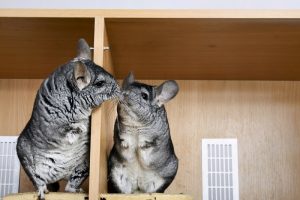
To look more into a Chinchilla’s life take a look at some awesome youtube video, made by Chinvlogs.
Lifespan
Before buying your chinchilla, you need to prepare for how long you will be looking after this pet. The average lifespan of a chinchilla is 10-20 years old; therefore, if you are looking for a pet with you for not so long look at getting either a more senior chinchilla or a different pet.
The oldest chinchilla ever lived was to 29 years and 229 days. Other rodents do not live as long as Chinchillas, which is unusual as the chinchilla is such a small animal. You can help your chinchilla live longer by feeding it the right diet, taking it for vet checkups, and ensuring satisfaction.
However, earlier we referred to household chinchillas (ones you may find at our animal shows). The wild chinchilla lifespan is shorter at only ten years.
Chinchilla lanigera is a long-tailed chinchilla. It’s the breed of chinchilla with the most extended lifespan. The documented record for a chinchilla is 17 years, but chinchilla breeders claim that some of their pets have lived over 20 years.
Chinchilla’s can die of young age. Often this is due to neglection. However, sometimes chinchillas have underlying genetic issues or pass away in unfortunate accidents. As long as you follow care guides, tips and do your research, your chinchilla should leave a fulfilled happy life.

Exercise
Chinchilla’s are active pets who are very curious. They work best when they have lots of physical exercises.
The most common way to make sure your chinchilla can get exercise is by choosing a room in your house and chinchilla-proofing it—the more empty the space, the better. However, avoid the bathrooms, and the chinchilla may crawl under the sink. A spacious living room or bedroom is usually great for a chinchilla’s exercise space.
After you have found your spacious room, make sure there are no wires on the floor. Chinchillas are known for chewing up wires! If there is a wire that is to difficult to get rid of, cover with thick tape.
Chinchillas also love to chew on wood. You can buy special spray so that they receive a terrible taste, resulting in no more chewing.
You can also make DIY Chinchilla toys. For example, hanging sticks on a piece of wood for the chinchilla to gnaw. Another DIY game is after you have used up your toilet paper, save the cardboard centre. The cardboard centre stuffed with grass creates a fun toy.

Breeds
Long-tailed Chinchilla (Chinchilla lanigera)
The long-tailed Chinchilla’s fur can be found in brownish, bluish, or pearl grey colours except on the stomach that has the yellowish-white colour.
The long-tailed chinchillas have bodies that are 9 to 14 inches long and bushy tails which are 3 to 6 inches long.
This is the breed of Chinchilla which is found in the Andes Mountains of northern Chile.
Long-tailed chinchillas are mainly herbivorous. They feed on veggies like leaves, roots, mosses, lichen, grass, and seeds.
Short-tailed Chinchilla (Chinchilla brevicaudata)
The short-tailed Chinchilla is also known as royal, Peruvian, or Bolivian Chinchilla. It is one among the endangered species of the rodent. They are found mostly in the Andes Mountains of Argentina, Bolivia, Peru, and Chile. These rodents are highly exploited for their fur. Short-tailed chinchillas typically have thicker shoulders and necks. Also, their tails are shorter.
These rodents usually measure 28 to 49 cm in length and 38 to 50 ounces in weight.
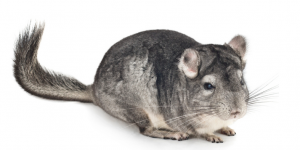
Can you tell which is the Chinchilla Lanigera and the Chinchilla Brevicaudata?
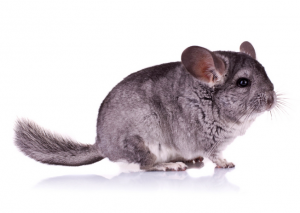
Pregnancy
Breeding & Mating
When chinchillas get to around the age of eight months, they become ready to have a baby.
Chinchilla’s mating is based upon the northern hemisphere, meaning it takes place from about November until May. This is called the light cycle. When the female chinchilla is ready to mate, the males will begin to groom. If you are planning to breed your chinchilla’s keep a close eye on them. Sometimes the female can become aggressive and attack the male.
Pregnancy & Babies
The whole pregnancy process for a chinchilla is around 110 days. Chinchillas often give birth to approximately two to six babies (known as Kits). The kits are born within a few minutes apart.
Chinchillas have a long pregnancy, and the gestation period is around 110 days. Birth usually occurs in the morning, and the babies, known as kits, are born a few minutes apart. The kits are born with their eyes open, covered in fur, and weigh around 2 ounces. They are active and can run and play from birth.
A chinchilla mum is protective and can be aggressive towards those who threaten her babies. Chinchilla’s warm nature ensures the kits are fed with milk, have warmth and protection. Some males can be good fathers, but others can be aggressive to the kits and even kill them.
Babies will eat solid food after about a week but are still dependent on their mother and her milk for up to 8 weeks.
If you are thinking of breeding your chinchillas, make sure to look at relevant youtube clips, books and speak to a specialist.
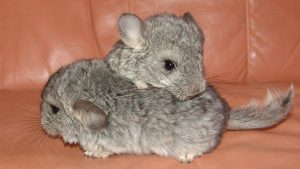
Conservation status of a Chinchilla
When looking at an animal’s conservation status, we have to consider the pace of reproduction and where the animal is native. The Chinchilla has a prolonged reproduction rate (though Chinchillas do live to 10 years) and is only native to Chile.
However, Chinchillas were nearly driven even further into extinction because of the fur trade! The long-tailed Chinchilla might have gone into extinction through poaching and habitat loss. As Chinchilla fur used to be hunted extensively as demand for their pelts was high; over three million chinchilla pelts and a small number of live animals were exported from Chile between 1895 and 1921.
Convention on International Trade of Endangered Animals (CITES), is a multilateral treaty to protect endangered plants and animals.
Today hunting of Chinchilla’s fur is forbidden, and the CITES protects the Chinchillas. Although these animals are protected, their habitat continues to be destroyed by grazing animals, collection of wood and mining harm these endangered animals’ last known habitat.
The organisation, ‘Save the Wild Chinchillas’, started work on the species in 1995 and conducted research, restoring habitat and building community support for Chinchilla conservation since then. These efforts have resulted in a drastic increase in the size of chinchilla colonies in two restoration areas.
